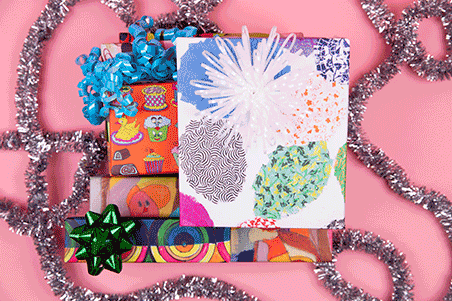ART REVIEW : Graphic Design Blessed by Technology
- Share via
Poetic, intuitive and futuristic, April Greiman’s graphic designs are in a league of their own. Known for her pioneering computer-generated work, the Los Angeles artist plucks imagery from hither and yon and sprinkles them into commercial posters in editions of hundreds or thousands. Characteristically, they manage to convey useful information at a glance while looking deliciously spacey.
In a 1984 poster for a lighting-and-furniture emporium, the head of a marble Greek god seems to be inspecting the underside of a long-legged halogen lamp, and a blurred foot seems to be under the spell of a mysterious pyramidal object. The center of the design is a white-hot oval glow on a yellow background--as if the viewer were peering blindly into a high-tech light bulb.
A graceful open hand, palm up, is a recurrent symbol of creativity. It appears in posters for a design conference in San Francisco (1987) and an architecture school (1990), two of the clients in creative fields who apparently give Greiman free rein to juggle somersaulting words, confettilike dot patterns, multilayered photographic imagery, disingenuously quirky symbols and even teasingly private asides.
In contrast, her poster for the 1984 Olympics is plain-Jane stuff: the crisply shadowed legs of a woman runner in red trunks leaping from a square of bright blue sky to a Pepsodent-tinted greensward. It’s vivid, all right, and a nice reminder of women’s role in athletics, but Greiman seems to have throttled down to a bland common denominator of taste.
Composing on the computer means being able to erase or redraw parts of a design with ridiculous ease; the hard part is knowing how to control the blizzard of possibilities at one’s fingertips. For Greiman--who also incorporates fax and video imagery into her work--technology’s blessings make possible a new kind of creative space replacing old-fashioned hierarchies that separate photographic image, typographic design and text. Looking at her work, one wonders idly what eccentric marvels the Bauhaus designers might have devised with a Macintosh.
(Turner Dailey Gallery, 7220 Beverly Blvd., to Sept. 1).
More to Read
The biggest entertainment stories
Get our big stories about Hollywood, film, television, music, arts, culture and more right in your inbox as soon as they publish.
You may occasionally receive promotional content from the Los Angeles Times.










